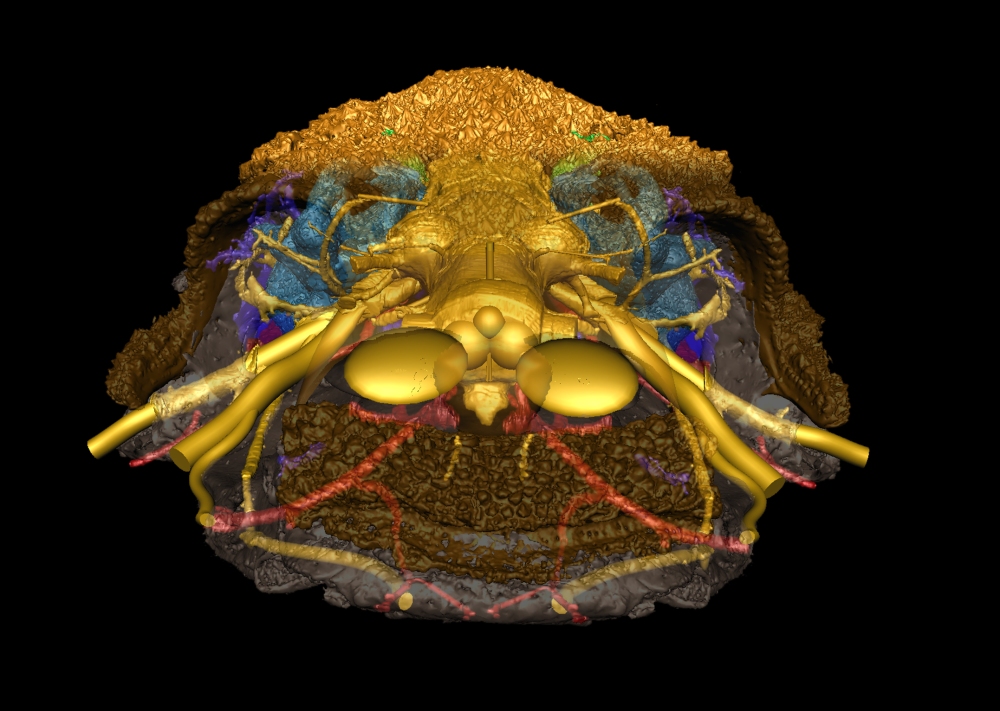
One of the most significant evolutionary innovations in early vertebrates was the jaw. Jawless fishes such as lampreys and hagfish have rows of teeth around the mouth opening which are used to rasp at prey, whereas most modern jawed fish and other vertebrates (collectively Gnathostomes) have an upper and lower jaw, with the lower jaw usually being articulated and the upper jaw being fairly fixed in the skull. But the development of jaws is clearly a drastic change: how did it come about? High-energy X-ray scanning has allowed researchers to study the head of Romundina, an ancient fish which appears to be in an intermediate state of jaw evolution. Romundina has features of both jawed and jawless fish, and has helped researchers at Uppsala University piece together the three main steps which defined the evolution of modern jawed fishes. Unlike jawless fish, Romundina had two nostrils which were separated from the base of the brain by a bony barrier. The nostrils were directly between the eyes and the skull extended beneath it and above the mouth. After Romundina, in armoured fish, this bony projection shrank away, leaving the nose on the front of the face and slightly beneath the eyes. Finally, in modern-type jawed fish, the forebrain and face lengthened, giving a shape we are more familiar with today. But these series of events can usually only be determined when ‘intermediate’ stages of development such as Romundina can give biologists and palaeotologists a snapshot into evolutionary history.
Image courtesy of Vincent Dupret. Read more about this work here.